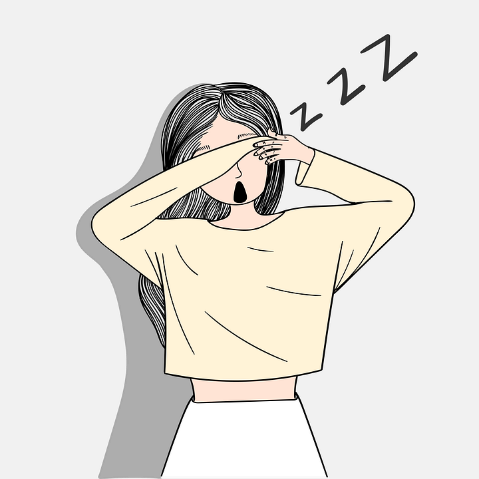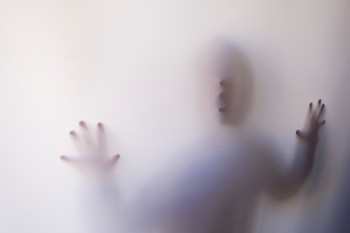© Pint of Science, 2025. All rights reserved.
Have you ever wondered why some people can get up and go at 6am, whilst, try as you might, you won’t be fully awake until at least 10am? Or why you feel more sluggish just after lunch and find it harder to concentrate on work? It turns out we’re not just “lazy”! Instead we can blame our circadian rhythm, the body’s 24-hour internal clock, which controls many biological processes including when we fall asleep and wake up, and which times of the day we feel most active.

Circa diem = approximately a day
Almost every cell in our body contains a biological clock, which helps regulate the way it behaves and interacts with other cells. In vertebrates, all of these cellular clocks are controlled and kept in sync by a “master clock” in the brain, a structure called the suprachiasmatic nucleus, or SCN. While the master clock operates on an almost 24hr cycle, it also takes in environmental information, such as sunlight, which keeps us in tune with day and night.
Our circadian rhythm is controlled by clock genes (yes really), which code for clock proteins. The genes CLOCK and BMAL1 work together to promote production of clock regulators, CRY and PER. CRY/PER then work together to stop production of CLOCK and BMAL1. Overall, this feedback loop takes roughly 24 hours and results in the circadian oscillation seen in many biological processes. Genetic variation in these genes is associated with sleep, metabolic, and immune disorders.

The clock proteins BMAL1 and CLOCK work together to increase production of the clock genes PER and CRY. PER/CRY then work together to stop BMAL1/CLOCK from making anymore PER/CRY. When PER/CRY is all used up, BMAL1/CLOCK is no longer being inhibited and can one again make more PER/CRY. This cycle happens over the course of 24 hours and many biological processes are regulated by this 24 hour cycle.
Early larks and night owls
At night, in the absence of light, the master clock initiates the production of melatonin, the “sleep” hormone. Even artificial light from screens can prevent the production of melatonin, which is why experts recommend not using electronic devices before bed.
Although our circadian rhythm follows the daily light cycle, everyone has a slightly different natural inclination to the times of the day they are most active and those when they’d rather sleep. This is referred to as your “chronotype”. Morning chronotypes, or larks, prefer to wake up early and be more active in the morning, whilst evening chronotypes, or owls, prefer to be active in the evening and wake up later. Notably, sleep chronotypes can change across a person’s lifetime. Young children are usually morning larks, but this gets later as they grow older, and teenagers tend to have the latest chronotypes of all age groups.
Social jetlag frequently occurs in teenagers due to variation in sleep patterns between week days, where they have to wake up early for school, and weekends, where they can follow their natural sleep schedule

Night Owl
Feeling blue? You might be out of sync with your circadian rhythm
Maintaining a balanced circadian rhythm is important for health, as a large number of studies have suggested dysregulation of the circadian rhythm is associated with various diseases. People who work night shifts have chronic circadian misalignment and also higher rates of metabolic disease, cardiovascular disease, and psychiatric disorders compared to day shift workers. One meta-analysis showed people working night shifts are up to 40% more likely to develop depression than daytime workers. Another study showed the more night shifts worked in a month, the higher the chance of developing type-2-diabetes.
Symptoms of autoimmune diseases, such as Rheumatoid Arthritis, vary with the circadian rhythm and tend to be worst first thing in the morning. This is because many immune cells and inflammatory mediators are under circadian control and are at their highest in the early hours. This is also why vaccines work differently at different times of the day. Recently, a study showed that vaccination with the BCG vaccine against tuberculosis provides a much stronger immune response when administered early in the morning compared to in the evening. Therefore, in the future, timings of administration might be important when researching and delivering new vaccines.
As we get older, our circadian rhythms become disrupted causing reduced sleep quality and disrupted sleep cycles. Disruption of the circadian rhythm in ageing is associated with development of many age-related disorders, such as Alzheimer’s Disease.
Tips for good sleep hygiene
It is important to help stay aligned with our circadian rhythm by getting a good night’ sleep and maintaining a regular sleep cycle.
- Try to go to bed and wake up at the same time every day – most adults need between 7-9 hours of sleep a night
- Regular exercise – physical activity during the day can help you fall asleep at night
- Limit light exposure at bed time – artificial light from electronic device screens can suppress the production of melatonin and make it more difficult to fall asleep
- Limit caffeine intake after noon – caffeine is a stimulant which can keep you awake
About the Author
Poppy Nathan is a PhD student at the University of Birmingham studying immunology and inflammation. She is investigating how immune cells move around the body and how this is affected in inflammatory disease. Poppy is passionate about science communication and public engagement. You can find her on twitter @poppynathan
Featured photos by Icons8_team, Saydung89 and No-Longer-Here from Pixabay


